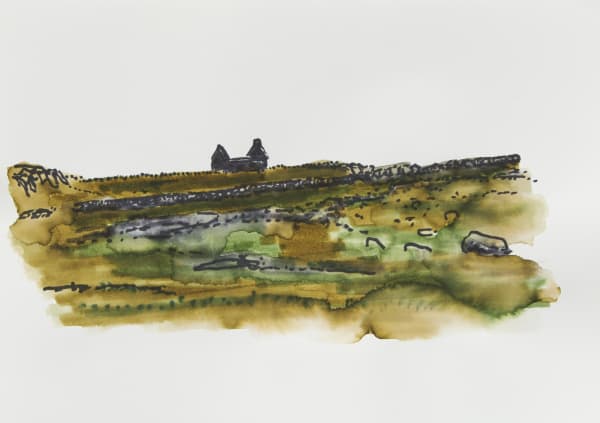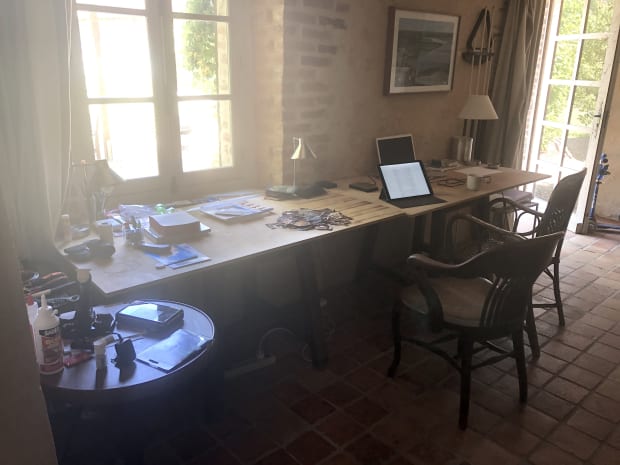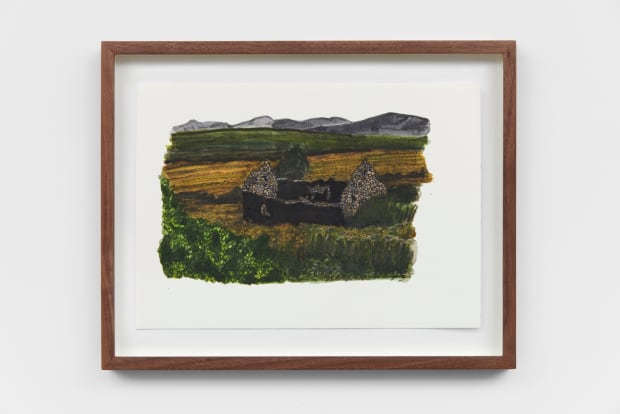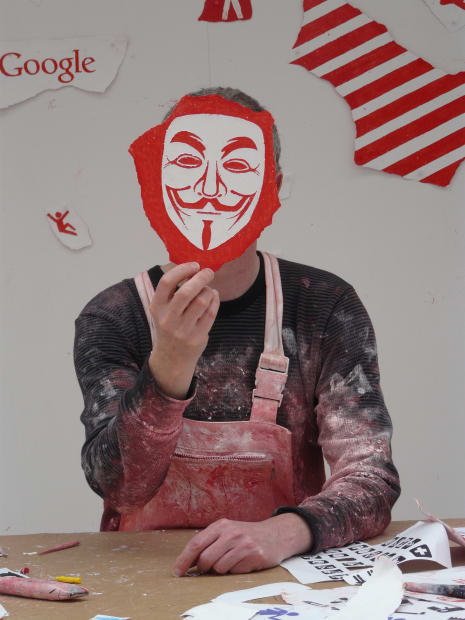-
SCREEN TIME
6 July - 31 August 2020 -
SCREEN TIME
An online exhibition of works on paper made in solitude by Abraham Cruzvillegas, Michael Landy and Akram Zaatari -
SCREEN TIME brings together works by Abraham Cruzvillegas, Michael Landy and Akram Zaatari — drawings and paintings on paper made by the three artists throughout the period of enforced lockdown during the global Coronavirus pandemic.
Cruzvillegas created spontaneous, freehand monochrome drawings in ink and graphite, lines which at one moment read as calligraphic marks and in the next morph playfully into primate form. Landy and Zaatari worked from online sources to produce works which seemingly long for a sensation or place beyond the conditions of their production. Landy began a series of elegiac watercolours of an imagined ancestral home. Drawn from photographs found online of abandoned crofts in rural Ireland, these works evoke an Arcadia, another time and place beyond the limitations of confinement. A series of acrylic paintings on technical paper by Zaatari take as their subject the physically tactile sport of oil wrestling. Twelve pairs of wrestlers are held in intimate poses, painted in the delicate colour palette of frescoes: a Roman frieze depicting the close, corporal contact of a bygone age.
While varied in material and subject, all are imbued with a sense of reverie, of dreaming in and of a place beyond the here and now. These are all intimate works made on small scale, at home or in the studio with materials close at hand, responding to the conditions of and within the limitations of lockdown.
-
Abraham Cruzvillegas
Primate Change Denial -

-

-

Photo: Haru Heshiki
-
-
Michael Landy
Family Ruins -

-

-

Photo: Hariett Baker
-
-
Akram Zaatari
Solitary Readings -
-

-

Photo: Marco Milan
-
-
For enquiries please contact Clare Morris: claremorris@thomasdanegallery.com












